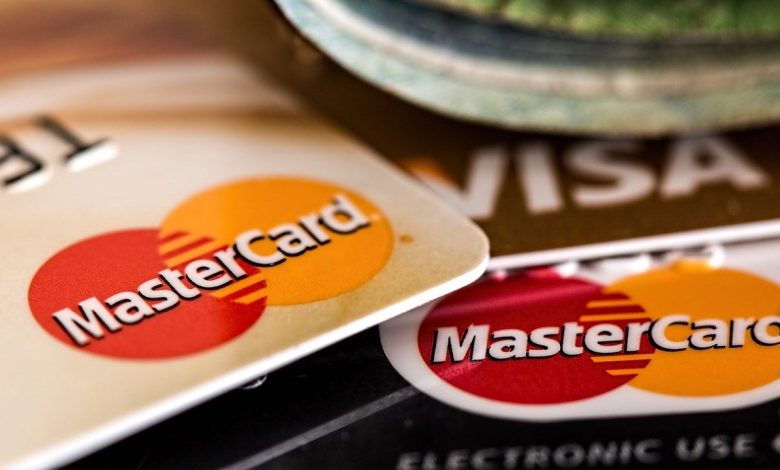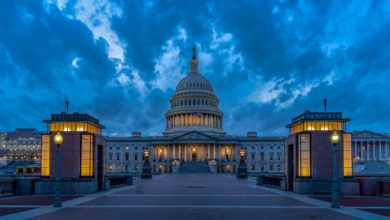Credit Card Spending Spikes Again as Big-Ticket Borrowing Goes Flat

American consumers continued to pile up debt on credit cards while borrowing for big-ticket items fell into the basement in August.
This is the behavior of extremely financially stressed people.
In August, the mainstream financial media breathlessly reported that the US economy was still “on strong footing,” as American shoppers continued “doling out cash” based on better-than-expected retail sales. But how did consumers manage to spend all of that money?
They borrowed it.
Revolving credit surged by 13.9% in August, according to the latest data from the Federal Reserve. But non-revolving credit, primarily made up of auto loans, student loans, and borrowing for other big-ticket items continued to languish in the basement – a recession warning sign.
Total consumer debt shrank by $15.6 billion in August, a 3.8% decline. This was primarily due to the resumption of student loan payments.
Even with the decrease, Americans are still buried under $4.97 trillion in consumer debt.
The Federal Reserve consumer debt figures include credit card debt, student loans, and auto loans, but do not factor in mortgage debt. When you include mortgages, US households are buried under a record level of debt. Household debt cracked $17 trillion for the first time ever in the first quarter of this year.
The decline in consumer debt is misleading. Americans are still running up their credit card balances at a torrid pace.
Revolving debt, primarily made up of credit card balances, jumped by $14.7 billion. That was a 13.9% annual increase. Americans now owe $1.28 trillion in revolving credit.
According to MarketWatch, “Americans appear to be relying more on debt to pay for their purchases. They are also using more ‘buy now and pay later’ plans.”
This is not exactly indicative of a healthy economy.
The bigger problem is the double whammy of rising debt and rising interest rates. Average credit card interest rates eclipsed the previous record high of 17.87% months ago. The average annual percentage rate (APR) currently stands at 20.72%.
As a result, more and more Americans are struggling to pay their credit card balances.
Consumers typically pay down credit card debt during the first quarter of the year. In Q1 2023, credit card debt remained basically unchanged. The annual payoff never happened.
This trend has been developing for months.
As prices skyrocketed last year, Americans blew through their savings to make ends meet. Aggregate savings peaked at $2.1 trillion in August 2021. As of June, the San Francisco Fed estimated that aggregate savings had dropped to $190 billion.
In other words, Americans ate away $1.9 trillion in savings in just two years.
Then they turned to credit cards.
Now they’re worried about a possible credit crunch. Nearly 60% of the respondents in a New York Fed consumer expectations survey said it’s harder to get credit cards, mortgages and other loans than it was a year ago. It was the highest level since the New York Fed started the data series back in 2013.
Americans have already drastically slowed down borrowing on big-ticket items.
Non-revolving credit plunged by $30.3 billion, a -9.8% decline. Analysts think the drop in non-revolving credit was primarily due to student loan borrowers resuming payments early to avoid accumulating interest charges. The government began charging interest again in September with payments required to resume in October.
“The unexpected contraction in consumer credit in August appears to have been driven by the one-off jump in voluntary repayments of student loans early ahead of the October resumption deadline,” Oxford Economics lead US economist Michael Pearce told MarketWatch.
Factoring out student loan repayments, non-revolving credit was basically flat in August after a tiny 0.4% increase in July.
On average, non-revolving debt has increased by 5% on an annual basis.
The plunge in non-revolving credit indicates that consumers have cut back spending on big-ticket items. That could signal that the economy is slipping toward a recession.
Nevertheless, spiking interest rates are not slowing down credit card borrowing. That’s likely because people simply don’t have a choice.
Federal Reserve rate hikes theoretically slow down borrowing and cool demand. But while people can cut discretionary spending, the average person can’t just stop buying groceries or filling up their gas tanks. If prices are rising faster than incomes, people have to turn to credit cards, no matter how high the interest rates climb.
As JD Power analysts made this very point.
The pandemic-era savings cushions are gone, the economy is shaky and consumers are leaning more heavily than ever on their credit cards to cover day-to-day expenses. Consumers are using their cards for a lot of everyday purchases. Grocery shopping is the lead purchase type that consumers say they are making.”
Call 1-888-GOLD-160 and speak with a Precious Metals Specialist today!
Buka akaun dagangan patuh syariah anda di Weltrade.
Source link






